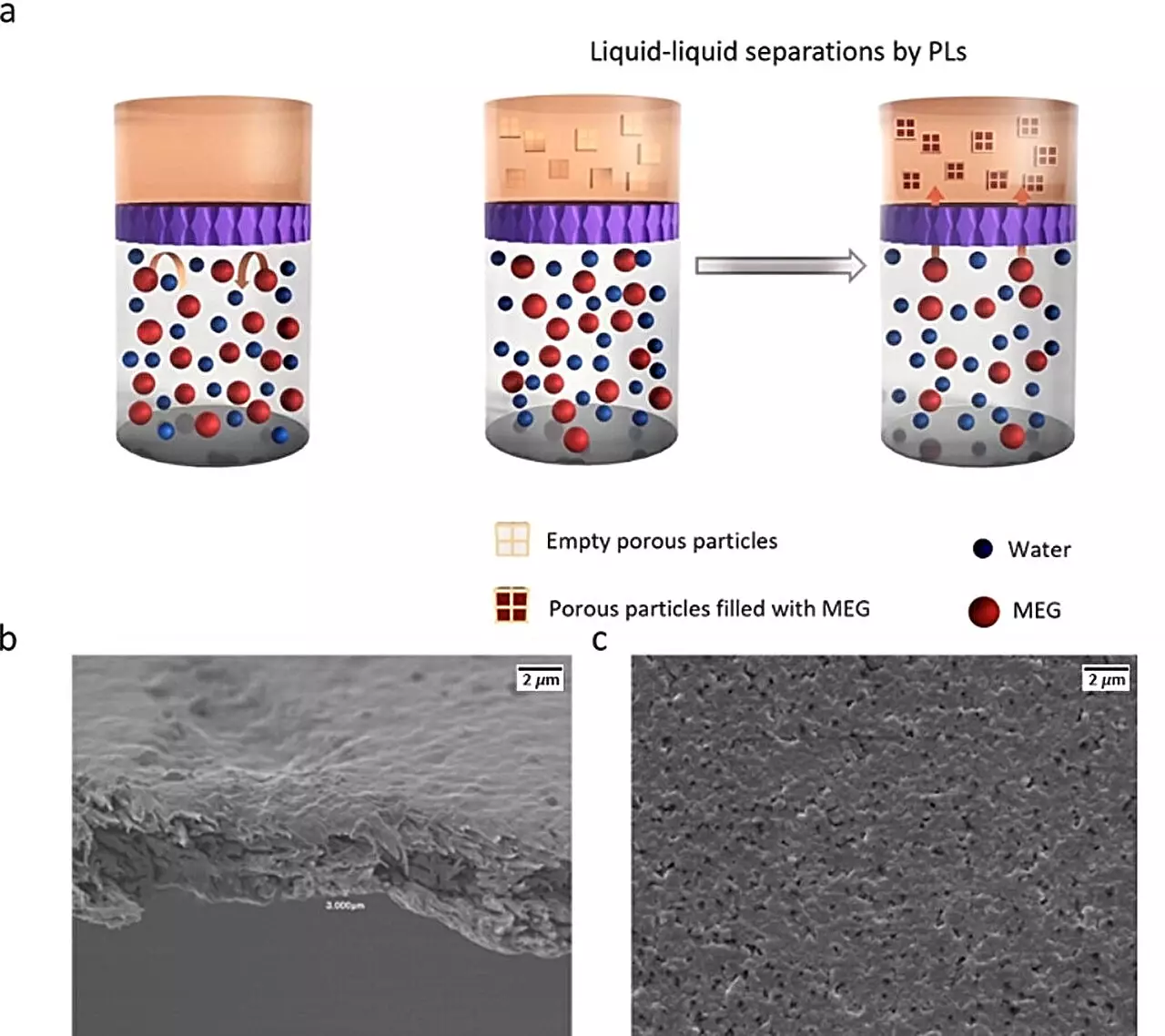In a groundbreaking study, researchers from the University of Birmingham and Queen’s University Belfast have pioneered the use of porous liquids (PLs) for liquid-liquid separation, marking a potential revolution across multiple sectors including environmental management and food and beverage production. This cutting-edge research, published in *Angewandte Chemie International Edition*, uncovers a novel method for isolating unwanted alcohols from aqueous solutions, including harmful de-icing agents traditionally used in aviation.
The focus of this research arises from a pressing environmental issue linked to the use of monoethylene glycol (MEG) in aircraft de-icing processes. MEG is a widely utilized de-icer whose resultant water mixtures present significant ecological challenges when improperly managed, particularly posing toxicity risks to aquatic ecosystems. The newly developed porous liquids have shown remarkable efficacy in selectively absorbing MEG from water, achieving absorption levels that can reach up to 88% of the liquid’s pore volume. This method promises not only to alleviate the environmental burden caused by accumulation of MEG in waste but also to create more viable disposal methods for this widely used substance.
Beyond environmental applications, the versatility of porous liquids extends into the beverage industry, with researchers exploring their potential to reduce the alcohol content in popular drinks such as wine and gin without compromising flavor. Current market offerings for low-alcohol beverages often struggle with taste retention, a hurdle that this new approach could overcome. The application of a non-toxic, pH-stable porous liquid for alcohol extraction presents an innovative strategy for producers seeking to meet the escalating consumer demand for beverages that deliver a full sensory experience but with significantly less alcohol content.
Assistant Professor Deborah Crawford, involved in this transformative study, emphasizes the implications of this discovery, noting its historical significance as one of the first applications of porous liquids for liquid extraction. The potential this technology holds for addressing the accumulation of MEG waste presents a significant step forward. “There are currently enormous tanks of MEG-water mixtures stored at airports, and this breakthrough allows for a feasible solution to an otherwise unsolvable problem,” she explains.
Furthermore, the possibility of producing low-alcohol variants of favorite beverages could disrupt the market, appealing to an audience increasingly inclined towards healthier lifestyles. This seamless fusion of science and industry addresses consumer desires while adhering to sustainability principles—paving the way for wider acceptance of low-alcohol options without the sacrifices typically associated with such products.
The research conducted by the teams at the University of Birmingham and Queen’s University Belfast presents an exciting paradigm shift in both environmental science and beverage production. By employing porous liquids for liquid-liquid separation, this study not only proposes a revolutionary method for managing toxic waste but also potentially reshapes the landscape of the beverage industry. This dual applicability highlights the far-reaching implications of the innovative use of porous liquids, which could lead to more sustainable practices and healthier consumer choices across the globe.


Leave a Reply